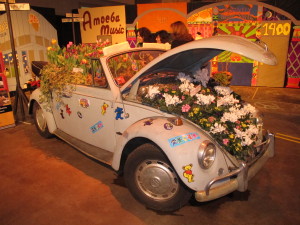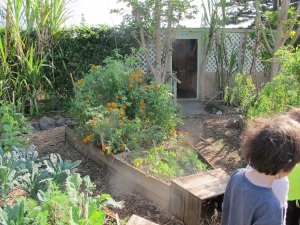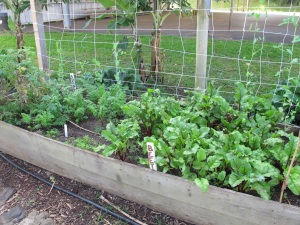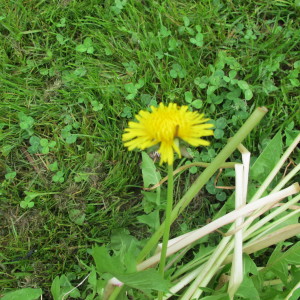The Spring Flower Shows
I’m a little spoiled this winter: I got to go to Maui in January for 10 days. You would think that I’d be ready for all the icy roads and driveways, having been given some respite. But I’m not. I want more warm sunny days. But I know the cure: the spring flower shows. I’ll go to as many as I can. Here’s this year’s lineup.
The first is the New Hampshire Orchid Society’s “Orchid Fantasy Escape” in Nashua, NH at the Radisson Hotel from February 13 to 15. Admission is just $10, $8 for seniors and free for kids under 12. I think getting kids interested in orchids is a good idea and will try to get my grandchildren to accompany me. George, age 11, already collects succulents, and may find orchids even better. Or perhaps Casey, who loves anything pink, will be the orchid fan. For more info: www.nhorchids.org/show.
Next up is the Rhode Island Flower Show February 19-22 at the RI Convention Center in downtown Providence. This is always one of my favorite shows because it has something new each year, along with favorite displays like the sand sculpture and the displays by the Carnivorous Plant Society and the RI Wild Plant Society. I love the competition among flower arrangers – one year they had a competition for best bikini made of leaves and flowers (on mannequins)!
Admission to the Providence Show is $19 for adults, $16 for seniors and $7 for children 7 to 12. I like being there on Thursday or Friday as the floor is less crowded than on the weekend. And for me, one of the best parts of the show are the educational workshops. This year Barbara Damrosch, author of The Garden Primer, a great basic gardening text, will be lecturing on Thursday and Friday. I’m not presenting there this year, maybe next year. For more, go to www.flowershow.com.
That same weekend is the Connecticut Flower & Garden Show at the Connecticut Convention Center in Hartford. This year’s theme is “The Spirit of Spring” with over 300 booths, great landscape displays and over 80 educational workshops. Admission is $16 for adults, $4 for kids 5 to 12, and $14 for seniors over 62 on Thursday and Friday. If you are traveling from out of state, think about combining the Rhode Island and Connecticut shows with an overnight in one town or the other. For info, www.ctflowershow.com.
Then comes the Vermont Flower Show on February 27 to March 1, one of my favorites. I like that the main landscape display is a collaborative effort, and that the show has many interesting events for children, including a model train display. It is held in the Champlain Valley Exposition Hall in Essex Junction. Tickets are $ 15, or $12 for seniors (age 60) and $3 for kids 3 to 17. For more info, go to www.greenworksvermont.org.
Although Ringling Brothers circus claimed to be the Greatest Show on Earth, the honor should go to the Philadelphia Flower Show, which this year is from February 28 to March 8. Held each year in the Pennsylvania Convention Center, more than 250,000 visitors will walk through the 33 acres of show. Tickets are expensive – $32 for an adult, $27 if bought in advance. Even kids are $17. Still, you gotta see it at least once. Info at www.theflowershow.com.
This year I hope to make it to the Portland Flower Show as I’ve never gotten to it and hear it’s nice. This year’s theme is “A Taste of Spring” and will be March 5 to March 8 at 58 Fore Street. Tickets are $15. More info at www.portlandcompany.com.
Boston is another grand event held this year March 11 to 15 at the Seaport World Trade Center. The theme this year is “Season of Enchantment”, which will bring out the magic of flowers by top ranked garden designers and floral arrangers from all over New England. Like all the big shows, I recommend going on a weekday, as it can get pretty crowded. Tickets are $20, or $17 over age 65.
I called my friend Jill Nooney who has competed at the Boston Flower Show several times. She said she usually spent about 9 months giving birth to her displays – growing the materials needed for them, and putting it all together. And although she has created amazing displays and won blue ribbons, all she really got out if it was bragging rights. So she’s not competing this year. Still, if you want to do a display, go to the show, and start your planning now for next year. For more info: www.bostonflowershow.com.
After a short break, the next show is the Seacoast Home and Garden Show at the Whittemore Center Arena in Durham, NH on March 28 and 29. This show will have 225 exhibitors showcasing their products and services. Seminars and a “Meet the Chef” program round out the schedule. Tickets are $8, just $6 over 65 years of age. More info at www.whittcenter.com.
There’s not much info yet on the last show, in Bangor. Just that it’s April 11 and 12 at the Cross Insurance Center in Bangor and the theme this year is “Naturally Nautical”. For info later, www.bdmainegardenshow.com
We can’t all escape the snow and cold, but we can get a day’s vacation from it – at a flower show. And it’s cheaper than therapy!
Henry Homeyer is the author of 4 gardening books and a UNH master Gardener. His web site is www.Gardening-Guy.com.
How Do We Encourage a New Generation of Gardeners?
I learned to love gardening from my grandfather, John Lenat. He introduced me to his garden and fed me tasty things right from it. He never made me weed – a sure way to discourage young gardeners. But in today’s world, many children don’t have a special person to teach them to garden, or a place to garden. Many have never planted a seed or eaten a carrot or tomato in the garden.
Maybe we need to look at our schools as venues for education about more than the core curriculum. I mean, which is more important? Knowing that 7 times 9 is 56? (Or 63!) Or teaching our children to garden and to appreciate fresh food that they have grown? In terms of health and longevity in this day of fast food and prepared junk food, should we not be teaching our children good eating habits as well as math? I recently visited a school where all the kids love veggies and fruits – food that they have grown there at the school.
The public elementary school in the town of Haiku on Maui, Hawaii has included gardening in their educational program. Each child gets twenty weeks of gardening instruction each year, one hour per week for 10 weeks in two different seasons. The school enrollment is about 440 students in grades K-5. The class I visited in the garden had about 25 children, and was taught by a half-time gardening teacher, Crystal Summers.
Ms. Summers was helped on the day I visited by the second grade teacher, Joan Junger, and a volunteer whom the kids called “Uncle Steve”. A class of 25 needs extra adults if each child is going to do meaningful work in the garden. Parent and community participation has been key to success of the gardening program in Haiku, and, according to Ms. Summers, “You have to have a principal who is on board.” Fortunately, in Haiku, they do.
On the day I visited, the children each participated in 3 activities. In one group they each planted a six-pack of marigolds with seeds saved from their garden. They had planted seeds before, and most knew just what to do. These marigolds will be sold in April when they have a flower festival at the school that will raise money for the garden.
The second activity was weeding. The kids were just back from vacation, and weeds had popped up in the walkways while they were away. The children used simple dandelion weeders and dug up shoots of new grass that had grown in their absence. Since they were all doing it together, and they only had to weed for about 10 minutes, the children did not seem to consider it drudgery.
The last activity was picking beans. They had a huge bush of “gondule beans”, also called pigeon peas, that had both ripe and green pods. Each second grader was given a pair of scissors and asked to cut and sort the beans. Green pods went in one basket, dry in another. The fresh pods were cut up and eaten by the children at the end of class, along with tiny pieces of a fresh radish that had been harvested that day.
Eating the garden produce is an important part of each visit to the garden. The children are learning not just growing, but the enjoyment of fresh veggies – even if, like the radish, the food has a taste that is different from what they are accustomed to.
One of the things the children like best are the green smoothies they make with garden produce. The principal donated a blender to the program, and Ms. Summers uses it to make smoothies. In the blender goes kale and other greens from the garden, and fruit from the garden or donated by parents. They are lucky – they can grow papayas and bananas right there at the perimeter of the garden.
So how does all this translate for New England school gardens? Because of our climate, we have a much shorter growing season – but now is the time to think about it. First of all, get your principal and parent-teacher organization interested. For example, the garden in Haiku had wood-sided raised beds, which is a good idea, but an initial investment. Fund raisers to get materials for the program would be a big help as most school budgets are already tight.
Next, get the school board interested and committed to it. Getting a teacher or teacher aid assigned to the program would be a big help – but also a budget line item. Although a program could be initiated and run a volunteer or Master Gardener, it would best to have a paid gardening teacher who can work with the kids of all grades. That gardening teacher can also link what is happening in the garden with what is being taught in the classroom. Gardening has the potential to increase math and language arts skills if integrated into a comprehensive program.
There are plenty of fast-growing greens that can be planted in early spring and harvested before school lets out in June. I love the idea of green smoothies – blending lettuce or spinach with bananas and apples, for example. They are delicious and healthy. And yes, someone needs to buy the fruit here in New England, but if we can get our kids craving healthy foods instead of fat and sugar-loaded snacks, we can, perhaps, set a life-long habit that will make a difference.
I feel so lucky to have spent part of my vacation in Maui visiting a school that really is doing more than teaching the 3 R’s. And I hope we can do more here – even if we can’t raise our own bananas.
Henry Homeyer is a lifelong organic gardener and the author of 4 gardening books. His web site is www.Gardening-Guy.com.
Learning and Helping as We Travel
|
When I packed my bags to go to Maui recently I thought about packing my CobraHead weeder. But in the rush of getting ready I neglected to do so. I wish I had. That’s right, I like to garden even when I go on vacation. There are always opportunities to help out, and to learn. A winter vacation in a warm place can offer more than just a tan and some relaxation.
A friend told me about an organic farm on Maui that serves developmentally disabled adults and sells organic fruits and vegetables to the community. I called the farm and offered a day of help; my three traveling companions accompanied me. It was a wonderful day – and helped me to feel a little less guilty about the carbon emissions of that big silver bird that brought me to Maui.
Lokelani ‘Ohana Farm is unlike any I have visited before. It is just over an acre in size and produces 10 kinds of bananas including thumb-sized bananas and “apple” bananas, my favorites. Apple bananas are half the size of bananas we know from the store with a rich flavor that makes ordinary bananas seem as bland as Wonder Bread. There had been a severe tropical storm just before we had arrived on Maui, and some of the banana plants had blown down. We helped by cutting up downed stalks and lugging them off to compost piles. And I got to do some weeding – while it was 20 below back home.
Lokelani Farm is a “vibrant sustainable ‘Ohana where “people with disabilities live, learn and work together with reverence for spirit, creativity and nature, supporting each other’s potential and sharing a life of purpose.”, according to the vision statement in their brochure.
Christina Chang, the director of the farm and programs, told me that the programs have been in existence just since 2005 and are modeled on the Camp Hill initiative of Pennsylvania. Camp Hill has farms and programs that serve developmentally disabled adults in several locations in the northeast. Their farm programs are organic and biodynamic. At Lokelani adults participants learn not only how to garden, but also Saori weaving and other craft skills, and develop better social skills.
So if you wish to help out for a day or more on your next vacation, how should you find a good place to do so? Before heading off to Florida or Nassau or France, do a little research on the internet. Twice before this experience I have worked on farms, once in France and once in the Hebrides off Scotland. Both allowed me to learn as well as to help.
In my previous experiences I had joined the WWOOFer program: World Wide Opportunities on Organic Farms. It matches up volunteers with organic farms for short term work experiences. I worked about a week on each of the farms where I “woofed”; some farms have restrictions about how long a worker must stay and help – a week or a month minimum, for example. In general, woofers get room and board provided and work 4 to 6 hours a day, five days a week. Lokelani had 3 woofers working on the farm the day we were there, but we were not a part of the official WWOOFer program. In general other woofers that I have met have been in their twenties and thirties, but there are no age restrictions.
In order to see what is available, go to the website www.wwoof.net. The website will not give you farm locations or contact info – they want you to pay first to join – but you can see what sorts of jobs and farm placements are available before you join. In the United States the fee to become a WWOOFer is $40. In France it is 25 Euros.
You need to join the WWOOF organization for the country you are interested in – you cannot join once for all of Europe, for example. The web site allows you to sort the farms according to your requirements for length of stay, accommodations, type of food provided. Thus you can select omnivore, vegetarian or vegan diet, and only farms that can provide that will show up on your search.
I also found that there are other organic farms on Maui, some of which provide accommodations and the opportunity to learn and take classes. So you don’t have to sign up to be a woofer if you want to spend some time gardening in winter.
So what did I learn at Lokelani that day? I learned that bananas are incredibly resilient. Cut off the top of the plant, and the roots and base will generate a new stem. The leaves make a great mulch – they will block out sunshine and hold down weeds. I learned what a breadfruit tree (and the fruit) look like, and what macadamia nuts look like right from the tree. I met some very interesting people. I learned that Lokelani is a wonderful non-profit (www.lokelaniohana.org) that is trying to not only help adults with disabilities, but to help the broader community to accept and understand the special love and creativity of people with disabilities.
So think about spending some time on a farm next time you vacation. I’m glad I did.
Henry Homeyer is not answering gardening questions this week. His Web site is www.Gardening-Guy.com. He is the author of 4 gardening books.
|
The Wild Wisdom of Weeds
This is the time of year when I find the time to read gardening books. I recently settled in by the woodstove with The Wild Wisdom of Weeds: 13 Essential Plants for Human Survival by Katrina Blair (Chelsea Green, 2014, $29.95 in paper). I was intrigued when I read, in the Forward by Sandor Katz, that “Most of us can identify many more corporate logos than plants.” Huh. That’s not true for you and me – as gardeners we know many plants. But overall? It probably is true. Katrina Blair wants all of us to recognize and use a few common weeds in our daily life.
Katrina Blair has selected 13 weeds that are found pretty much everywhere in the world, including some that grow in Antarctica. These weeds follow humans, growing in disturbed areas and surviving even where our domesticated plants will not. She selected these weeds because they can be used as food and medicine. She notes that “The wild greens outside are still vibrating with the life force and are at their peak nutritional potency.”
Of the thirteen, everyone knows dandelions, clover, thistle and grass. Others like chickweed, lambsquarter and mustard you have certainly seen, but may not know by name. A few of the others are common, but less well recognized. Most of us do not think of weeds as food or medicine. Maybe it’s time to expand our view of them.
Why eat weeds? Blair states that weeds are very nutrient-rich. She points out that they require no fertilizer or pesticides to thrive. Weeds are available locally and are very good at picking up a wide range of minerals from out soil – whereas crops that are grown year after year in commercial agriculture plots may lack trace minerals.
Blair states that grasses can pick up 92 minerals out of the 102 available in healthy soils. Getting as many vitamins and minerals from fresh plants as possible makes sense to me. Weeds can provide a good source of minerals.
Where to harvest, when to harvest and how to use weeds are important questions that Blair answers in her book. She explains that picking wild greens from areas where chemicals have been applied is not a good policy. That includes commercial agriculture fields. But your own gardens? No problem. And she noted that picking in spring and early summer is best, when leaves and stems are less tough and bitter. She dries fresh weeds to use later in powders she uses in green drinks.
How to use these weeds is a major focus of the book, which supplies recipes such as dock mustard pretzels, spouted lambsquarter tabouli and mallow milk shakes. Many of the recipes take considerable time to prepare (and to harvest). Blair is a fanatic about eating weeds, so she doesn’t mind spending the time to collect seeds from wild plants, and then grinding them, and finally away winnowing the chaff before using.
The wild ingredients, the weeds, are just one component of most of the recipes provided. So, for example, she will eat a healthy breakfast cereal (presumably from her local health food store) that she supplements with weed seeds she harvested. Or she will make bread using wheat flower but add some ground weed seeds.
Katrina Blair is also happy to sit on the ground and pick and eat wild grasses and clover flowers. She notes that our digestive system cannot breakdown cellulose. But grass stalks, when young, are edible. Just chew the stems for a long time to break the cell walls and then savor the fresh juices and chlorophyll. She spits out the indigestible fibers.
I recently became a fan of “green smoothies” and often prepare one for my breakfast. In a good high-speed blender I mix leafy greens, fruit, ginger, freshly squeezed lime juice and water or green tea. I like the idea of adding some wild weed leaves to the blender (in season). Dandelion leaves, for example, are pretty bitter unless picked before the plants have blossomed in the early spring. But mixed into a smoothie with a banana and some apple probably would enrich my diet without offending my tender tongue.
It is important to note that not all weeds are edible. Before ingesting weeds in quantity, she recommends eating a little bit, and listening to your body’s response. She says her body will tell her not to eat many leaves from even her favorite weeds if they are too high in oxalic acid, for example. She notes that juicers can concentrate and extract things like oxalic acid, giving you too high a dose if you drink too much, particularly late in the season when levels are high in leaves.
I recommend only eating weeds that you have positively identified. Her book has plenty of photographs, but nothing beats a good plant book with a botanic key for identifying them. There may be a forager in your neighborhood, too. Many emigrants have learned to identify and use wild plants in their native lands, and find them here, too. If you see someone foraging, introduce yourself and start learning.
Although Kristina Blair feels confident to set off on a 3-day hike without food, I am not. Foraging can be a nice supplement to my diet, but I will never depend on weeds as a major component of my diet. But if you need weeds for your diet, my garden usually has plenty!
Henry Homeyer’s web site is www.Gardening-Guy.com. He lives in Cornish Flat, NH and is the author or 4 gardening books.









